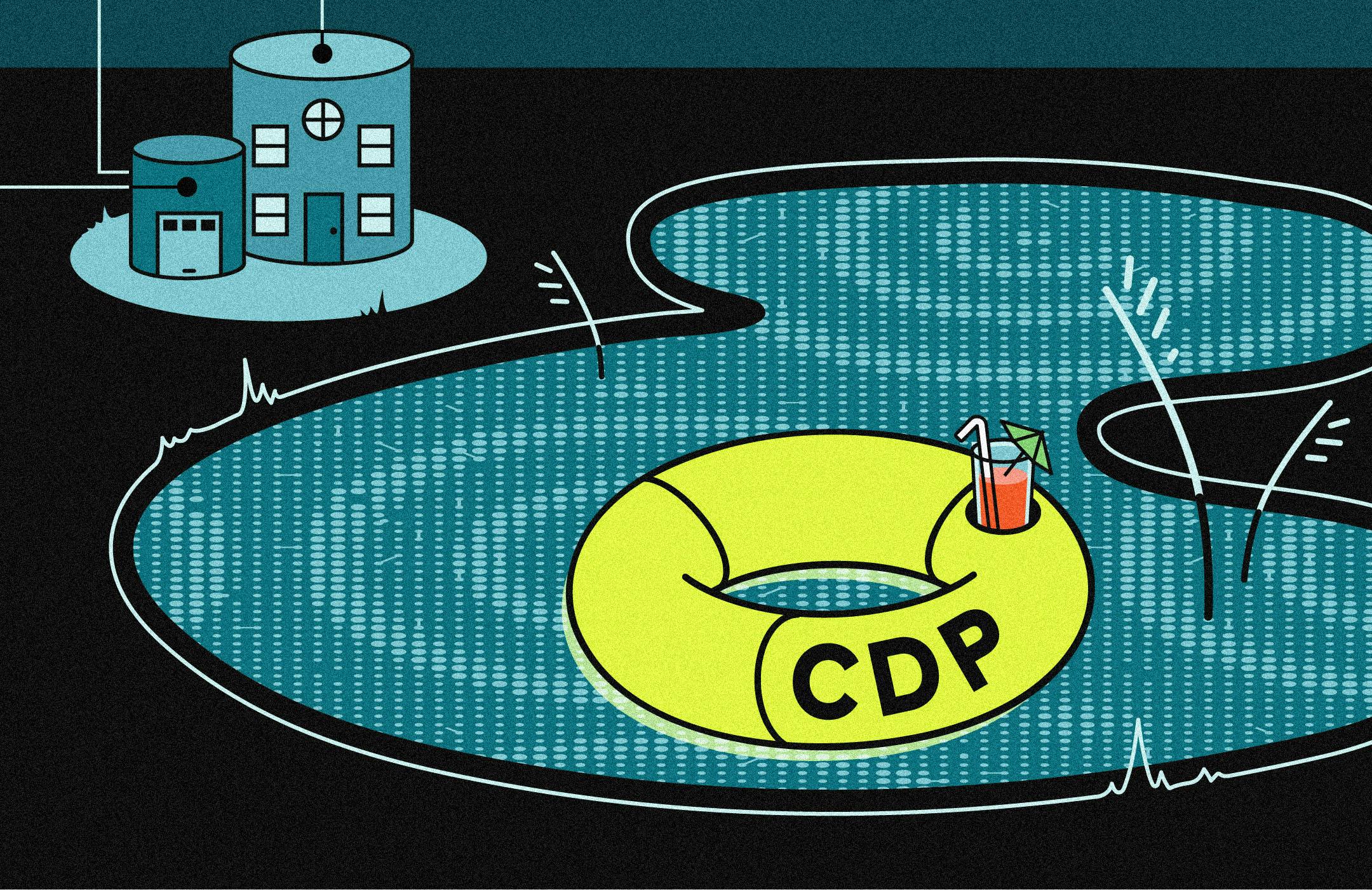The first big problem to solve with customer data is that it starts off scattered in different places — separate storage systems for transactions, email interactions, website engagement, service tickets, etc. Before you can do anything interesting with your data, like predictive analytics or personalizing your marketing, you have to break down silos and get it all together.
The good news on that score is there are a few trusty solutions for centralized data storage.
“I’ve got a data warehouse,” you might say. “I can keep all my data from all my sources in there.” Or maybe, “I’ve got a data lake, with all my data in one place for when I need it.” Or maybe you even have a beautiful data lakehouse, where your data can live and play in style.
So why would you need a Customer Data Platform (CDP)?
If massive datasets live in warehouses and lakes, then the CDP is where they go to study and get a job. While centralized data storage systems like warehouses and lakes are great ways to keep all the data together, especially at the scale most enterprises deal with (we’re talking hundreds of billions of data points), they don’t organize and cleanse the data so that you can make the most out of it.
Here are five ways that a CDP powers up your data warehouse or data lake:
1. Clean customer data
The next step after getting all the data together is to sort it out. That means connecting email addresses to purchase history to names — in other words, turning data points into a picture of actual human beings. A CDP can perform this kind of identity resolution and create a Customer 360 database so that the stored data can start to tell a coherent story and provide answers to key questions teams across the enterprise may have about customer behavior.
2. Built-in attributes
After organizing the customer data into profiles, a good CDP will neatly lay out all the information needed to get a picture of each customer, like contact information, preferred channel, birthday, etc. It can also use historical information as a basis for predictive attributes like lifetime value, churn propensity, discount sensitivity, and more. With rich attributes for each customer, your teams will be able to perform advanced segmentation to find and reach the right audiences for a given campaign.
3. Managing workflows
Data warehouses and lakes can store a serious volume of data but on their own they aren’t able to do very much with it. To activate use cases and bring the data to life, it takes multiple tools and custom code — or the right CDP. From bringing the data together to shaping data models, performing ID resolution, running analytics, and supplying downstream teams with rich customer profiles and insights, each step along the way requires specific functionality that a CDP makes possible. Beyond that, a good CDP will keep the records up to date with the freshest data that comes in and then transmit that throughout the steps of the workflow automatically, so everyone accessing the data in their various functions is getting the same picture (the ‘single source of truth’ that so many have quested after). When IT is handling data governance and regulatory compliance, Analytics is finding hidden pockets of opportunity in the customer base, Marketing is conjuring up winning campaigns and experiences, Service is supporting customer inquiries, and Finance is making forecasts, they all need to be able to trust the data and know that everyone is marching to the beat of the same data drum.
4. Access for non-technical teams
Let’s return to the access for marketers and business users in the previous point — this is a big deal. Without a proper interface for non-technical users, marketers are stuck waiting for segments and audiences from Analytics or IT, who typically have their hands full with a million other things, so marketers end up twiddling their thumbs. An intuitive, no-code user experience lets Marketing teams get the data they need to unleash their creativity.
5. Purpose-built connections
When it’s time to activate your data, you need to send it to the right tools — whether that’s activating a personalized email campaign, or sending profiles to customer service reps so they have the background on who they’re supporting, or piping the data to Business Intelligence platforms for reporting and visualizations (or one of a million other use cases). CDPs are designed to feed data seamlessly into a range of different tools, with a more robust set of connections than the typical data warehouse or data lake without technical teams having to license other tools or write, test, and manage tedious custom ETL (extract - transform - load).
Data warehouses and data lakes solve the first big problem of customer data by getting it all into one place. The storage capacity is mammoth, and they’re optimized to bring data in from a large number of sources. For the largest enterprises it can be a great move to set up a centralized data storage system. But when it comes to the difference between having data and actually using it, a CDP hooked up to a warehouse or lake can bring results to a whole new level.
Interested in learning more about what a CDP might look like in action? Check out our guide to using customer data across the enterprise.
